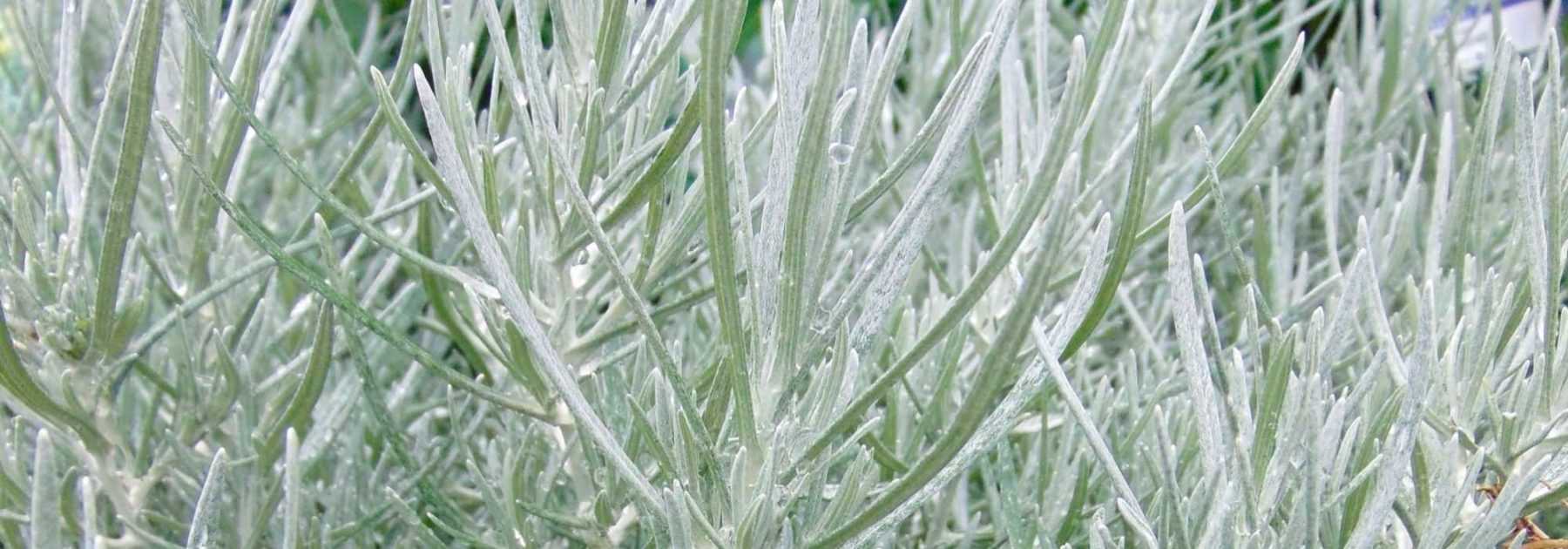
Helichrysum, curry plant, everlastings: sowing, planting, care
Contents
Everlastings in a Nutshell
- We distinguish between perennial Helichrysum or everlastings (H.italicum, H.stoechas) and annuals (strawflowers or Helichrysum bracteatum)
- Perennial everlastings feature golden-yellow pompon flowers on highly aromatic silvery-grey foliage that releases a spicy curry fragrance
- Strawflowers are distinguished by their colourful, scaly flowers that don’t fade, used to create the most beautiful dried bouquets
- All grow in full sun in very well-drained soil
- They flower effortlessly from June until frost in rockeries, slopes, pots or slightly wild garden borders
Our expert's advice
The genus Helichrysum includes various Mediterranean plants better known as everlasting flowers. Among them, Helichrysum italicum, Italian strawflower or Corsican everlasting, from which an anti-wrinkle essential oil is extracted, Helichrysum stoechas, also called “dune everlasting” with very downy leaves, Helichrysum thianschanicum, Helichrysum arenarium, or the Helichrysum petiolare, which are hardy perennials, and the Helichrysum bracteatum or strawflowers, which are annuals prized for their dried flowers.
All are recognised as medicinal plants, but beyond being synonymous with a miracle anti-ageing flower, the everlasting has many other attractions!
The hardy perennials or “curry plants” stand out for their silvery foliage topped with bright yellow flowers from summer until frost, and above all for their strong curry-like fragrance, much like the Helichrysum italicum, which is highly valued both in the garden and in cooking.
The strawflower has flowers that never fade, retaining their colour when dried, making them the best flowers for creating beautiful dried bouquets. Pink, orange, white, lilac-blue, or even red—thanks to numerous horticultural selections, annual everlasting flowers come in a wide range of vibrant shades.
Whether hardy or annual, the everlasting flower is unfazed by drought or sea spray and loves heat and well-drained soils, preferably poor and chalky, though the strawflower will appreciate slightly cooler conditions at its base.
In rockeries, borders, vegetable gardens, pots, or bouquets for your home, embrace the Helichrysum to maintain a floral display in dry gardens right up to the onset of winter.
Be tempted by our Mediterranean perennials and discover our seeds for dried bouquets!
Description and botany
Botanical data
- Latin name Helichrysum
- Family Asteraceae
- Common name Everlasting, Curry plant
- Flowering July to October
- Height 0.25 cm to 1.20 m
- Exposure Sun
- Soil type Stony, fresh
- Hardiness -2 to -15°C depending on species
The Helichrysum, helichryse or everlasting belongs to the vast Asteraceae family, like daisies and asters.
The genus includes 500 species of perennial herbaceous plants, annuals or sub-shrubs with often aromatic woody stems, native to the arid hills of dry and sunny regions around the Mediterranean, particularly Italy but also Asia, South Africa and Australia.
Among the most common, we distinguish:
- perennial everlastings such as Helichrysum italicum, Corsican everlasting, Italian everlasting, Curry plant or Curry herb whose very aromatic foliage emits a strong curry fragrance, the common everlasting or “dune everlasting” (Helichrysum stoechas) with downy leaves and upright flowers like tufts, and the woolly everlasting (Helichrysum petiolare) recognisable by its grey and woolly leaves which comes in many cultivars.
- their less hardy cousin, Helichrysum bracteatum also found under the name Bracteantha bracteata or bract everlasting is a perennial plant in its native country but grown as an annual in our climates. It is highly prized for its multicoloured heads essential in dried bouquets.
The plant forms a dense, rounded, upright clump fairly quickly (Helichrysum italicum, Helichrysum stoechas) or trailing and trailing (Helichrysum petiolare), depending on the helichrysum species. It consists of woody stems reaching 0.25 to 0.80 m, even 1.20 m in height depending on the species. The bract everlasting shows faster growth, and flowers just two to three months after sowing.
The perennial everlastings are distinguished by aromatic foliage that persists in winter with a curry-like scent. The strongly or slightly branched stems bear leaves whose shape and colour differ depending on the Helichrysum.
The alternate leaves, similar to those of lavender, most often have a narrow lamina, linear, lanceolate to elliptical, acuminate, sometimes heart-shaped in Helichrysum petiolare. They measure from 2 to 15 cm long and are downy, even particularly woolly in perennial species, smooth and green in annuals.
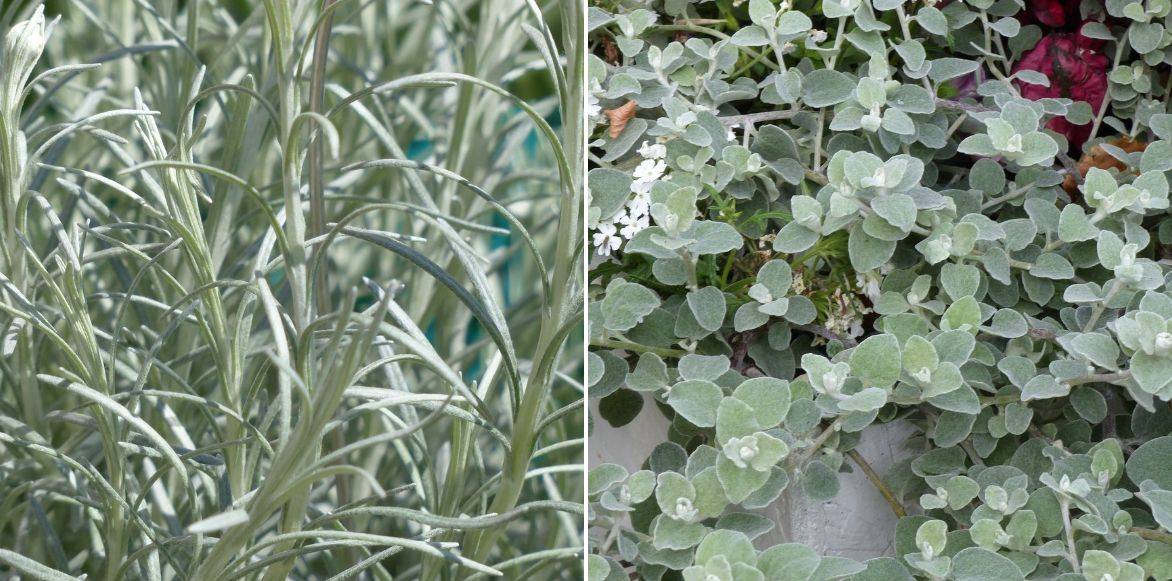

Some perennial everlastings have beautiful silvery foliage: Helichrysum italicum and Helichrysum petiolare ‘Silver’
While this foliage is remarkable for its grey, grey-green or grey-white tones, some cultivars of the Woolly everlasting like ‘Variegata’ stand out with yellow-variegated green foliage.
This silver-hued bush is covered with flowers from June to September, sometimes until the first frosts. This summer and autumn flowering is another attraction of the plant. However, perennial and annual everlastings also differ in their very different flowers.
From the woody stump emerge thin leafy stems, each bearing small globular inflorescences at their tips.
The Helichrysum italicum and its perennial companions display small yellow heads 3 to 8 cm in diameter grouped in corymbs at the end of each stem. The plant is then covered with very numerous flowers that open into spherical pompoms. Without ligules and surrounded by longer, lighter bracts, though fewer than those of the bract everlasting, they consist of tightly packed florets evoking small golden-yellow buds, Helichrysum in Greek means “golden sun”.
Some species, like the Oriental everlasting, offer flowers with changing colours evolving from pale yellow to sunny yellow as they bloom.
The bract everlastings have such a strong character that they stand out from a thousand others, just like those of their cousin the Chrysanthemum! They open into solitary heads 2 to 8 cm in diameter at the end of each stem. The flowers of Xerochrysum bracteatum are characterised by a corolla without ray florets which are replaced by dried and translucent bracts imitating petals. These thin and rigid bracts like a sheet of paper (papyraceous) evoke mother-of-pearl and have the particularity of not fading, which earned this flower its name “everlasting”. They bloom around a centre of tiny yellow tubular florets marked with a dark-coloured ring. When dried, they produce small seeds with egrets that sometimes self-seed, dispersed by the wind.
Originally pearly golden yellow, they now offer, thanks to multiple selections, very varied flower colours, from the most garish to the softest. They are most often offered in colour mixes. These very shiny and scaly corollas come in many shades ranging from white to purple through lilac, salmon, Tyrian pink, red, bronze and dark yellow and orange. Some are bicoloured. The heads are most often double, the numerous hybridisations having allowed for example the creation of Helichrysum monstruosum or Monstrous double bract everlasting, another everlasting with giant flowers!
This melliferous flowering, remarkably generous in all everlastings, renews itself continuously all summer, attracting very many pollinating insects, particularly bees.
The pretty luminous heads allow for magnificent dried bouquets of very long duration, highly prized in floristry, particularly the bract everlastings. Everlastings are also superb in fresh bouquets.
While the Bract everlastings only withstand light frosts of around -1 to -2 °C, grown as annuals, perennial everlastings are mostly relatively hardy (at least down to -10 -15°C). All appreciate hot, sunny exposures or partial shade, tolerating drought and poor or calcareous soils. They grow in well-drained or shallow soil and do not tolerate acidic or heavy soils as they dread winter moisture. Bract everlastings will develop more in fresh and enriched soil where they will be more floriferous.
Everlastings easily find their place in a natural garden and particularly in a dry garden to flower rockeries or slightly wild areas. They integrate perfectly into beds of annual and perennial flowers, borders, mixed borders, but also in pots and planters on balconies and terraces.
All everlastings have long been known for their medicinal properties. An essential oil is notably extracted from the Italian everlasting, used for its anti-inflammatory and analgesic virtues and renowned for its anti-ageing action.
The fresh leaves of perennial everlastings can be used in cooking to flavour salads, fish, grilled meats, rice or marinades, though hard to digest, it is preferable not to consume them. In some countries, the dried flowers of the dune everlasting are consumed as an infusion.
Main species and varieties
In the family of everlastings, you’ll have the choice between perennial species with silvery, downy foliage emitting a strong curry fragrance and annual varieties with brightly coloured, cheerful bracts, perfect for creating dried bouquets. All bloom enthusiastically throughout summer in rockeries or slightly wild areas of the garden!
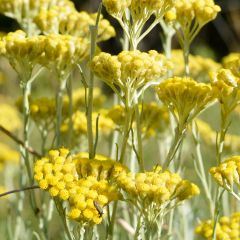
Helichrysum italicum
- Flowering time August to October
- Height at maturity 50 cm
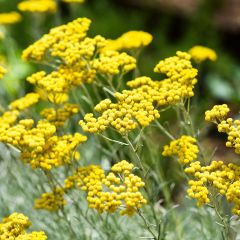
Helichrysum italicum Plug
- Flowering time July to October
- Height at maturity 35 cm
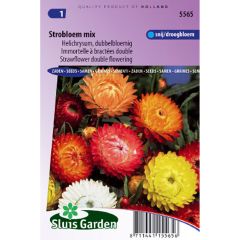
Strawflower Double Flowered Mixed Seeds - Helychrysum monstruosum
- Flowering time August to October
- Height at maturity 1 m
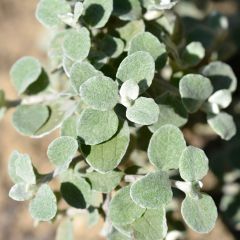
Helichrysum petiolare Silver
- Flowering time July to November
- Height at maturity 50 cm
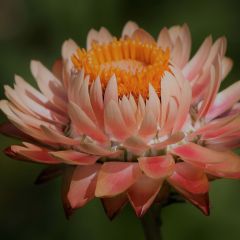
Strawflower Double Salmon Seeds - Helychrysum monstruosum
- Flowering time August to October
- Height at maturity 80 cm
Discover other Helichrysum
View all →Available in 1 sizes
Available in 1 sizes
Available in 1 sizes
Available in 1 sizes

Available in 2 sizes
Available in 1 sizes
Available in 1 sizes
Available in 1 sizes
Available in 2 sizes
Available in 2 sizes
Planting
Where to plant the everlasting flower?
Helichrysum or Everlasting flower is a Mediterranean plant whose hardiness varies depending on the species. Perennial everlastings like Helichrysum italicum can tolerate cold temperatures down to around -15°C, and grow throughout France, making them very common in Mediterranean gardens. However, in very cold and wet regions, perennial everlastings may start to suffer from -10°C, as they dislike moisture, especially in winter. Everlastings with bracts are tender perennials, which will be grown as annuals and resown each year in our gardens.
From their origins, all everlastings have retained a love for heat and arid soils. Helichrysum are sun-loving and drought-tolerant plants par excellence!
These undemanding plants grow very easily in full sun, in any shallow, poor, rather chalky soil, even stony and gravelly, as long as it is very well-drained, only fearing overly wet soils. They adapt to any ordinary soil as long as it doesn’t retain water. To flower well, everlastings with bracts will however require a slightly cooler and enriched soil throughout the season.
Perennial everlastings are essential in all natural gardens, particularly in dry gardens or coastal gardens as they are not afraid of sea spray. They are also useful for filling gaps in perennial borders. Perennial species are a boon for dry areas where they form pretty silvery clumps all year round in rockeries and dry slopes, in borders or as ground cover in the most challenging areas of the garden. The curry plant also naturally finds its place in a vegetable garden in a square or herb border.
Annual everlastings can be sown almost anywhere in ornamental gardens as well as in cutting gardens and will flower all summer until October in pots, hanging baskets and planters on balconies or terraces.
When to plant perennial everlastings?
Our plug plants of Helichrysum should be planted in spring from March to May depending on the region when temperatures rise, or in autumn in September-October in warm climates.
How to plant perennial everlastings?
In the ground
Everlastings absolutely need perfect drainage. In heavy, compact or clay soil, incorporate gravel or coarse sand at the bottom of the planting hole. If your soil is too wet, plant on a slope or in a raised rockery. Space plants about 30 to 40 cm apart in all directions (allow 4 to 6 plants per m2).
Before final planting, we recommend potting up our young plug plants into buckets filled with compost to harden them off. Plant them outdoors once the risk of frost has completely passed.
- Dig a hole 2 to 3 times wider than the root ball
- Work the soil well to loosen it
- Lighten with coarse sand
- Spread a layer of gravel at the bottom of the hole
- Place the plug plant in the centre of the hole without burying the collar too deeply
- Backfill, firm gently
- Water well after planting then moderately without drowning the roots
In pots
The soil must be well-draining to avoid stagnant moisture which would rot the roots. The woolly everlasting (Helichrysum petiolare), less hardy than its perennial counterparts, is generally considered an annual and with its trailing habit is better suited to pot or hanging basket cultivation than other perennial everlastings.
- In a large container at least 50 cm in diameter, spread a good layer of gravel or clay pebbles
- Plant in a mix of compost, garden soil and river sand or pozzolan
- Water after planting then sparingly, only during drought and never allowing water to stagnate in saucers
- Place in full sun
Follow our advice for planting plug plants in containers correctly.
When and how to sow the annual everlasting flower?
Strawflower bract seeds should be sown in spring, under cover from February to April or directly outdoors after the last frost from April onwards, with flowering beginning in July.
Under cover
- Sow the seeds as thinly as possible in a tray filled with good sowing compost
- Lightly cover the seeds with compost
- Firm down and water thoroughly with a fine spray
- Keep the sowing in the light, in a heated shelter at 20°C and maintain moisture until germination, which takes 2 to 3 weeks
- Transplant the seedlings when they reach about 5 cm into individual buckets
- Plant out in the garden at the end of May when temperatures are warm enough, spacing them 30 to 40 cm apart in all directions
- Pinch out the stems to encourage more ramified growth – they’ll produce more flowers!
Direct sowing in open ground or pots
In open ground
Flowering will begin later using this method, from August onwards, as strawflower bract seeds can only be sown once all risk of frost has passed and in well-warmed soil, therefore not before April or May.
- Sow your seeds thinly by scattering them over well-cleared, aerated soil enriched with compost
- Lightly cover them with compost
- Firm down and water with a fine spray until germination
- After germination, thin out the sowing, keeping only the strongest young plants spaced 30 to 40 cm apart
- Pinch out the tips of young stems to encourage ramified growth
In pots
You can also choose to sow directly into 30 cm diameter pots or 30 cm long containers, using a mix of compost, sand and garden soil. After germination, thin out to keep only three seedlings per container.
How to care for Everlasting Flowers?
Once well established, Everlastings, whether perennial or annual, require very little maintenance. These are rarely diseased plants as long as the soil remains well-drained.
Caring for perennial Everlastings
The first summer, water once a week and then only during prolonged drought, always avoiding excess. They are accustomed to the long, arid summers characteristic of the Mediterranean climate, requiring no watering once properly rooted.
In pots, water a little more frequently, always allowing the substrate to dry out well between waterings.
The perennial Everlastings are undemanding plants for which no fertiliser is necessary.
In regions with harsh winters, bring the more tender Helichrysum varieties like Helichrysum petiolare indoors, sheltered from frost and rain. Water them sparingly during winter and bring them back outside in May.
And follow our advice for caring for perennials and protecting your plants from the cold.
Pruning perennial Everlastings
Pruning is not essential but helps maintain an attractive shape. They tolerate regular but not drastic pruning in late winter, which prevents them from forming old wood, as the parts that become lignified gradually bare and no longer produce new shoots.
- At the end of the season, simply cut back the flower stems with secateurs to prevent the flowers from fruiting, which unnecessarily exhausts the plant: hang them upside down to dry for making dried bouquets!
- Prune only the current year’s shoots, which are still green and tender: avoid cutting into old wood, as it will not regrow. In early spring (March-April): trim the bulk of the young shoots to 2 or 3 cm from the old wood, no more.
To learn more, check out our guide: How to prune Helichrysum?
Harvesting leaves
The highly aromatic fresh leaves of Helichrysum or Curry Plant can be harvested year-round as needed to flavour dishes and salads.
Caring for Strawflowers
The Strawflower grows very quickly and will appreciate slightly more fertile soil enriched with a liquid fertiliser for flowering plants once during the season for outdoor plants and once a month from June to September for potted specimens.
It will also need more regular watering than its perennial cousins, making it even more floriferous.
Remove faded flowers regularly to encourage new blooms and extend the flowering period. However, allow some flowers to go to seed: you can sow them the following year. The plants should be discarded at the end of the season.
Harvest of dried everlasting flowers
The everlasting flowers, whether perennial or not, owe their name to the fact that they do not wilt, even after flowering, making the everlasting flower one of the best flowers for dried bouquets.
Pick the flowers in dry weather, just before they are fully open. Hang these flowering stems upside down in a dry, dark and airy place. When the leaves are dried, remove them from the stems as they turn white when drying and will not look attractive in your bouquets. And discover our collection of dried flower seeds.
→ Learn more about drying and preserving Helichrysum or curry plant in our tutorial!
Helichrysum italicum is one of the effective anti-moth plants: discover how to use it for this purpose.
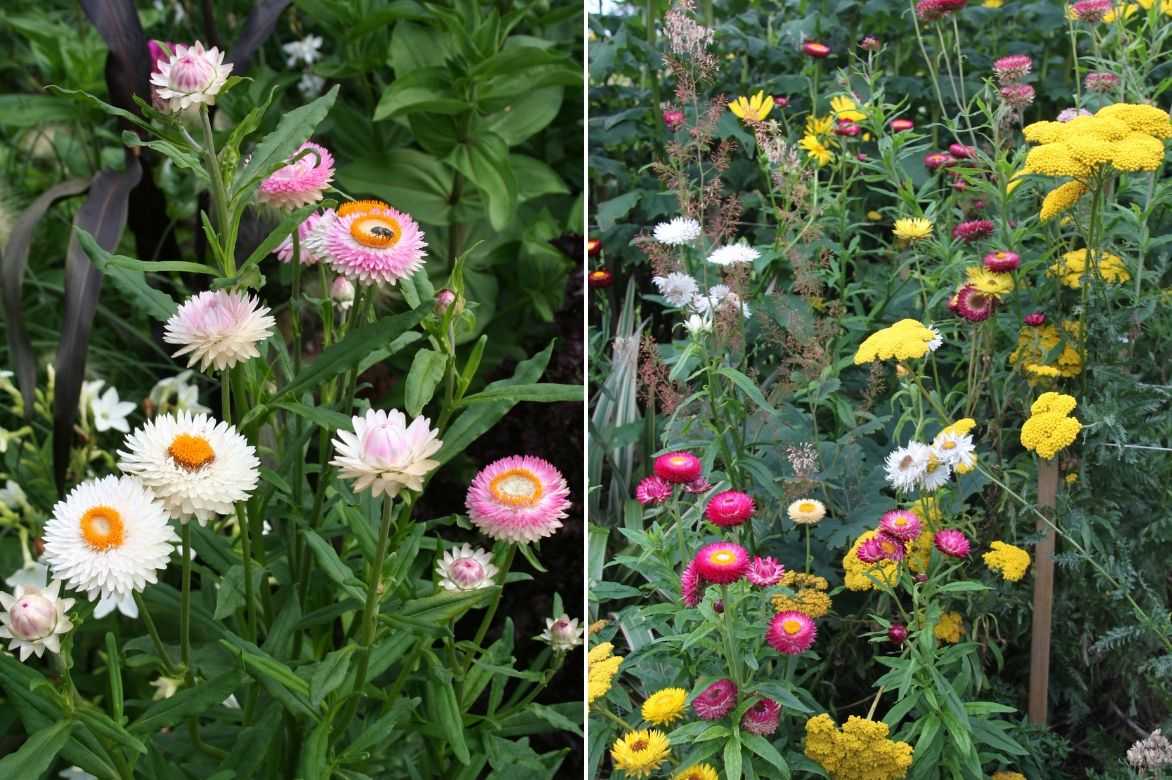
Diseases and potential pests
Fairly resistant to diseases, Everlastings have few enemies.
During hot and humid weather, especially in late summer, they may be susceptible to powdery mildew which leaves a white coating on the foliage. As a preventive measure: water at the base without wetting the leaves and spray nettle manure, horsetail decoction or Bordeaux mixture. If affected: remove and burn the diseased parts and follow our advice for combating powdery mildew.
They can also be targeted by aphids and caterpillars: spray with water mixed with black soap to dislodge them.
Propagation of perennial everlastings
Perennial everlastings such as Helichrysum italicum or curry plant can be easily propagated in June by herbaceous cuttings or by semi-hardwood cuttings in July-August.
How to take Helichrysum or Everlasting cuttings
- Take 10-12 cm long stem tips without flowers
- Remove the lower leaves from the stem
- Insert the cuttings into buckets filled with potting compost and river sand
- Keep the substrate moist until rooting occurs
- Protect the young seedlings from frost throughout winter
- Plant out the following spring when temperatures have warmed
- Pinch out stems to encourage bushiness
- Water at planting time then moderately thereafter
→ Learn more about Helichrysum propagation in our advice sheet
Pair with
Just like their southern cousins, lavender or santolina, the perennial Everlastings always bring a touch of Mediterranean charm to any garden, both exotic and elegant. They are essential in dry gardens and wild, sun-baked landscapes, where they form lovely silvery clumps all year round.
In a rock garden, Helichrysum italicum or H. petiolare will keep company with other Mediterranean perennials, equally undemanding and drought-resistant, such as a creeping rosemary, a small potentilla, a Tanacetum haradjanii, artemisias, or yellow sedums. They can also be paired with other perennials requiring similar growing conditions, like Spanish Broom, Woolly Artemisia, or Cerastium tomentosum.
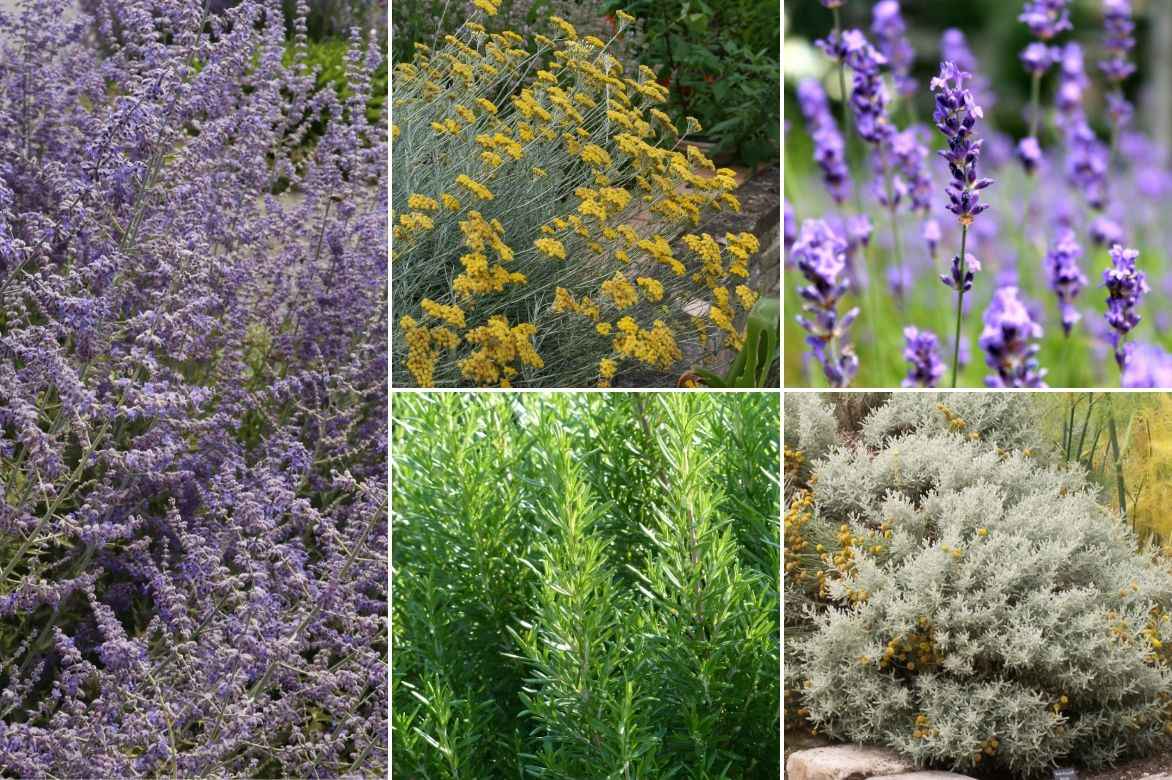

An example of a Mediterranean-inspired combination: Perovskia atriplicifolia ‘Blue Spire’, Helichrysum italicum, Lavender, Rosemary, and Santolina
Alongside an Artemisia, santoninas, and a few clumps of lavender, they will create an aromatic border of glaucous or grey foliage that smells of the garrigue. With their bright foliage persisting through winter, paired with delosperma and dianthus, they also make excellent ground cover for Mediterranean bushes like oleanders, rockroses, or olive trees.
Their bright yellow flowering will also echo the blue or purple hues of ceanothus or buddleias. For a symphony of yellow flowers, pair them with yarrows, rockroses, coreopsis, and heleniums, while they will offer a lovely contrast with the complementary blue of Perovskia, caryopteris, catmints, and sages. On an arid slope, combine them with small dry-soil bushes such as Hertia cheirifolia, Hypericum olympicum, creeping broom, and dryland spurges.
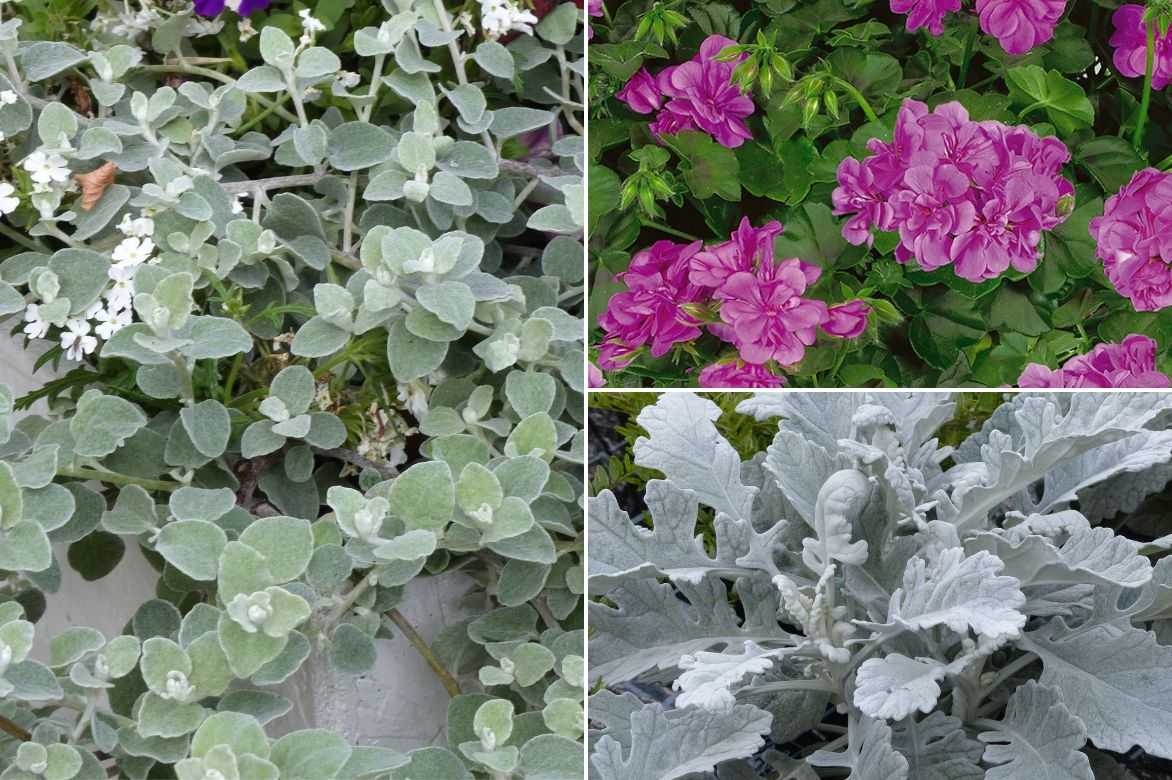

An idea for a hanging basket combination: Helichrysum petiolare ‘Silver’, Pelargonium ‘Amelit’, and Dusty Miller (‘Silver Dust’, for example)
In a sunny naturalistic meadow, perennial everlastings will contribute to lush, colourful scenes in midsummer alongside other floriferous dry-soil perennials like globe thistles, Erigeron karvinskianus, coneflowers, hollyhocks, sweet sultan, oxeye daisies, agastaches, and milk vetches. In a scree garden, the silvery clumps of perennial everlastings will mingle with wispy little grasses like Stipa pennata or Stipa tenuifolia, or with agaves or prickly pears for more contemporary pairings.
In the vegetable garden, you can pair the curry plant with other easy-going aromatic perennials like thymes, sages…
Meanwhile, the bract everlasting or annual everlastings, with their slightly old-fashioned charm and endlessly vibrant hues, are a must in all cottage gardens, where they add an exotic touch to colourful mixed borders or flowerbed edges. Blooming in midsummer and into early autumn, mingled with heleniums, blanket flowers, autumn sedums, late-flowering perennials, or dazzlingly hued annuals like African daisies, they bring saturated colours to a slightly less floriferous time of year.
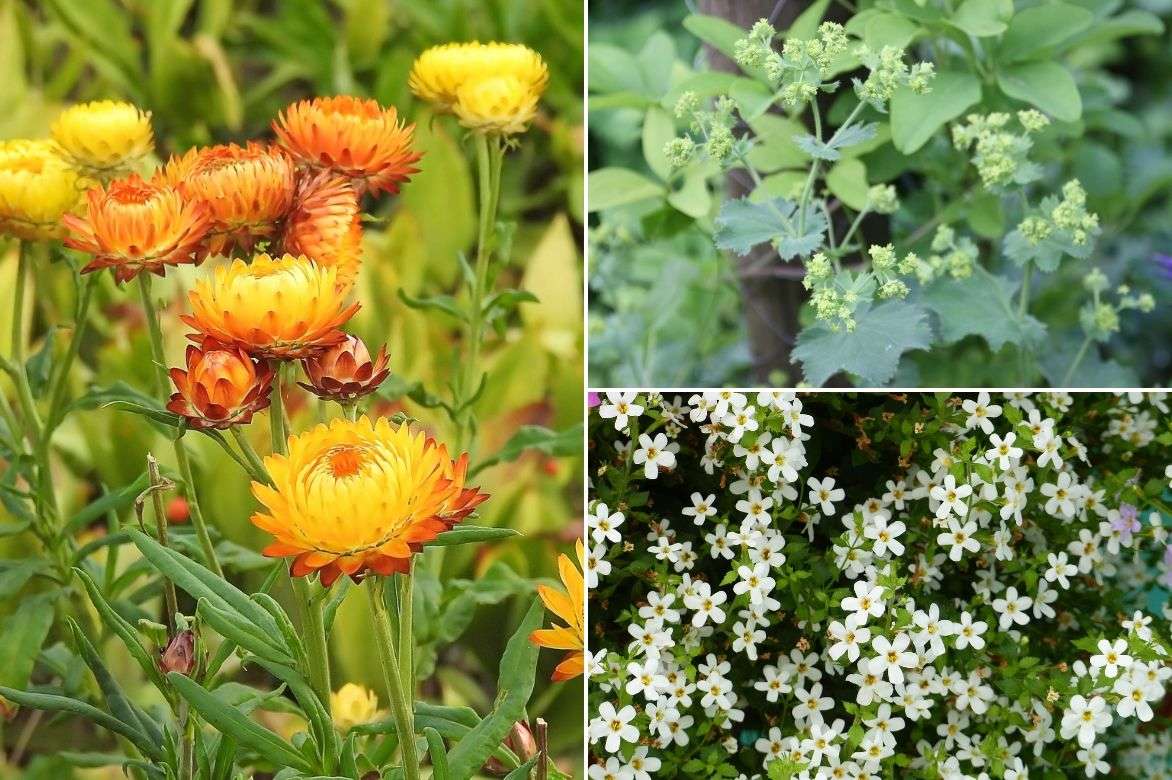

An example of a combination: Helichrysum bracteatum (any colour or a mix), Lady’s Mantle (such as A. epipsila), and Bacopa ‘Snowtopia White’
They also pair beautifully with the bold flowers of dahlias. Their shiny heads blend seamlessly among airy grasses like fountain grass, maiden grass, feather grass, or foxtail barley, which lighten their highly structured flowers. Asters and chrysanthemums are also excellent companions to extend their flowering into autumn.
In a cutting garden, combine them with statices and amaranths—they are among the easiest flowers to dry! In containers, mix them with zinnias, small dahlias, and the feathery spikelets of delicate grasses.
→ More ideas for pairing Helichrysum in our advice guide!
Useful resources
- Our dried flower seeds will allow you to grow your own flowers to dry and create charming vintage-style arrangements
- All our plants for dry gardens
- Discover our 7 planting combination ideas for beautiful summer planters
- Subscribe!
- Contents
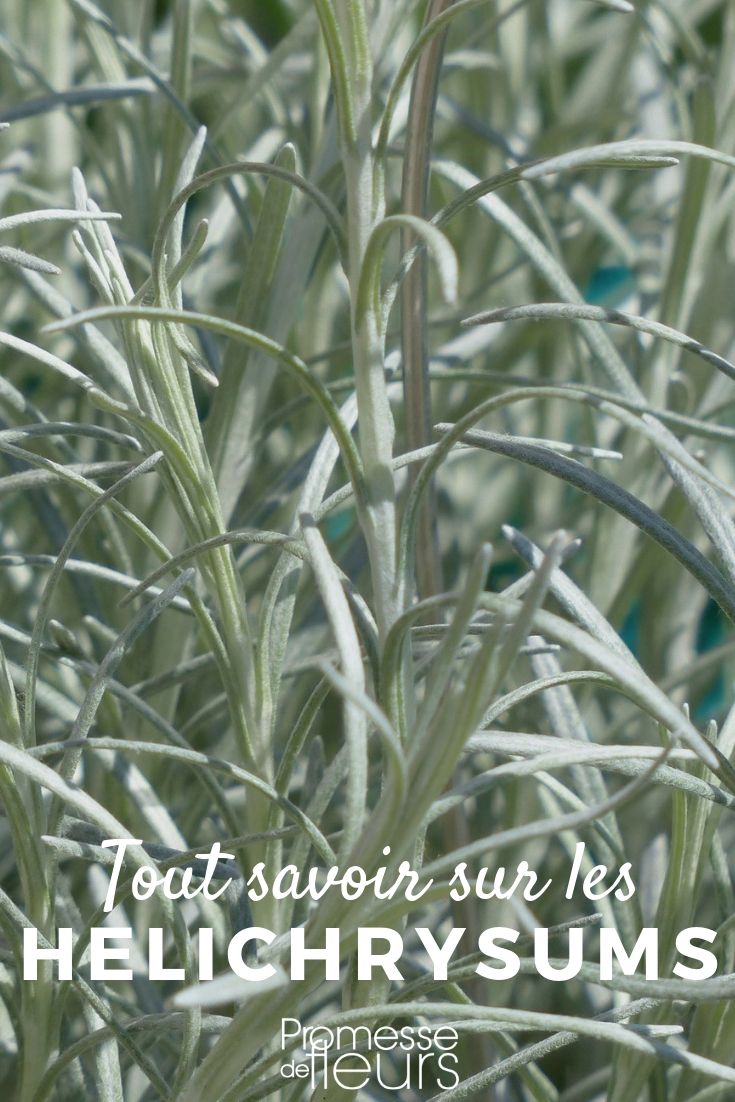


































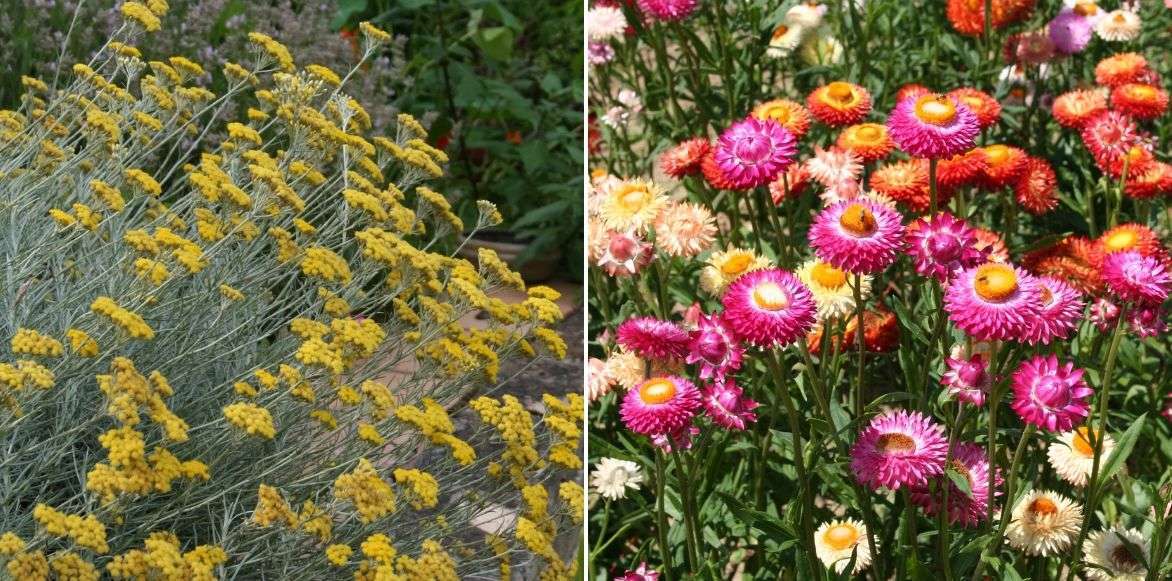
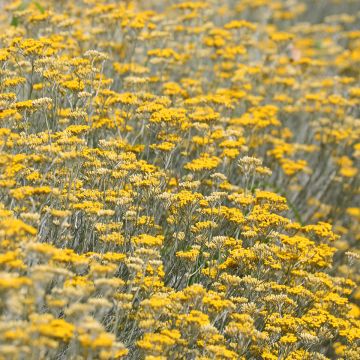
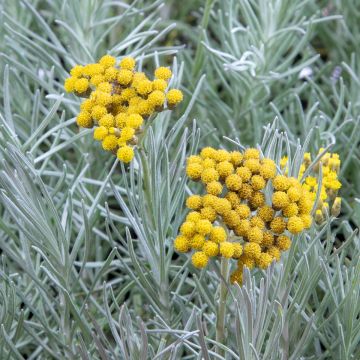

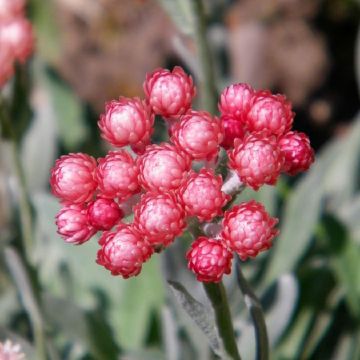

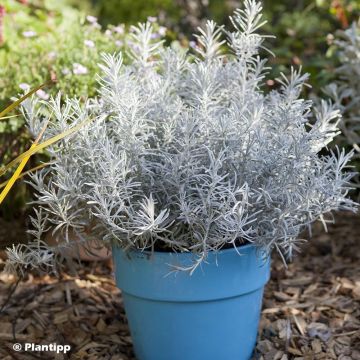
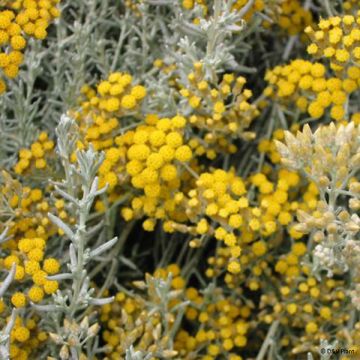


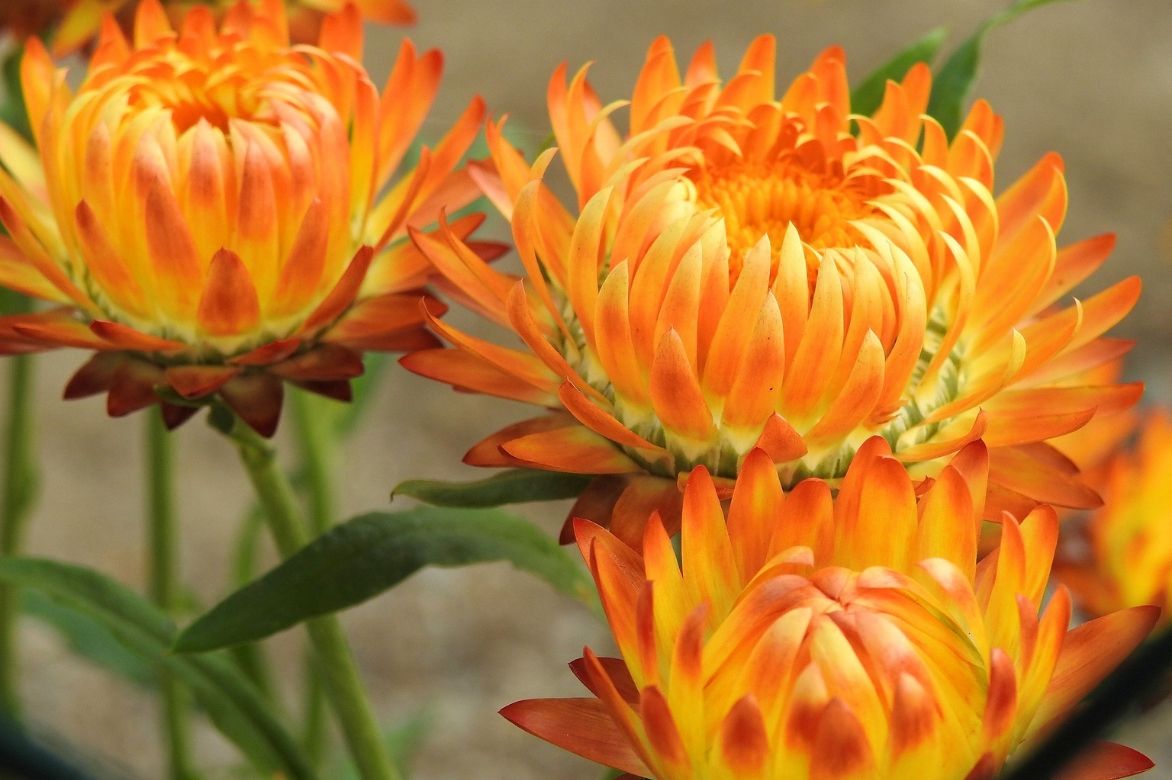
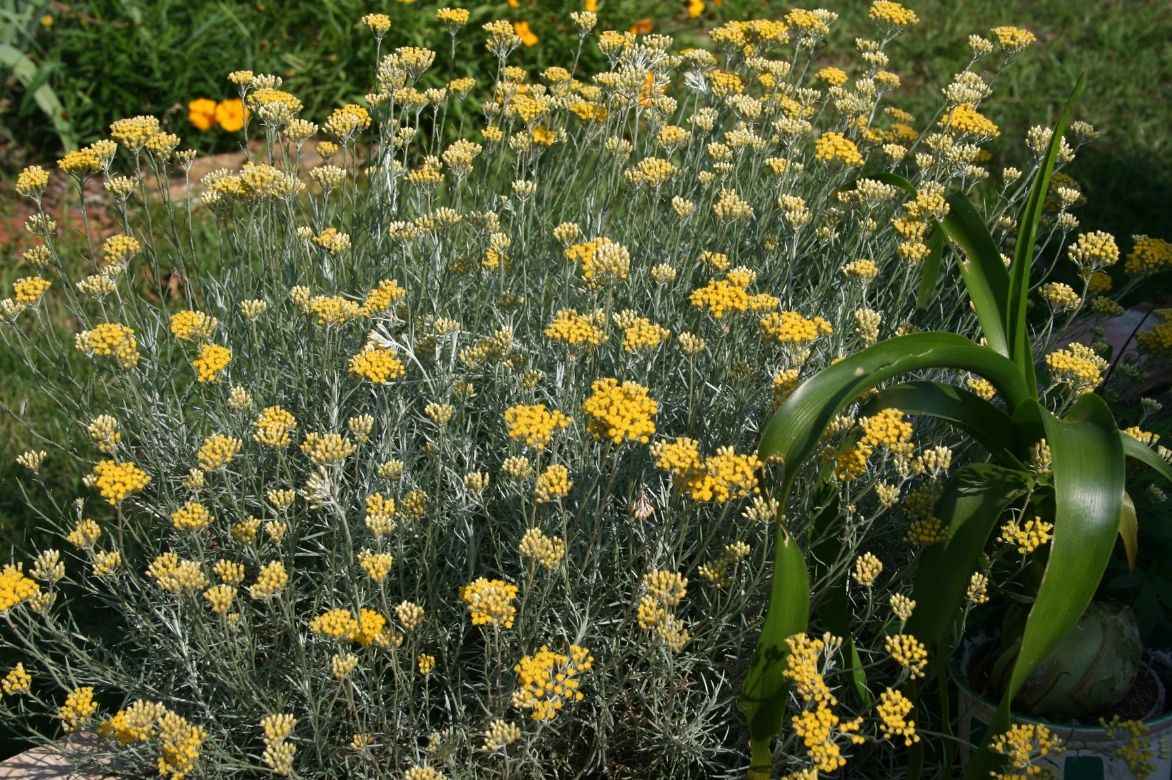
Comments